I love Aline’s By the Seashore ensemble, but I’ve never been 100% happy with the skirt, especially not on me (it’s too short). And the bustle has serious issues.
When I inherited Nana’s fabric stash it included a 5.4 metre length of blue and white tartan. It wasn’t quite as ideal a match for Renoir’s painting as the tan and blue tartan I found for my first skirt, but it was free, so that’s a massive benefit!
I set the fabric aside for an Aline re-do, and in April 2011 I decided it was time to tackle the project. First I made a basic skirt foundation out of heavy cotton calico (muslin), using the 1880s patterns reproduced at the front of Arnold’s Patterns of Fashion 1860-1940. They are all basically the same: a series of gored panels with angled edges heading towards the back, and a rectangular back panel which goes over the bustle.
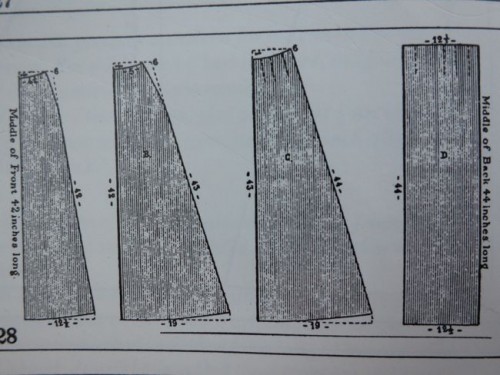
1880s skirt pattern from Myra’s Journal of Fashion, via Janet Arnold’s Patterns of Fashion 1860-1940
In addition to the original Renoir painting, I was using two other pieces of inspiration. First, a mid 1880s outdoors ensemble from the Met:
I liked this outfit because 1) it’s cotton, as is my fabric, 2) it looks like it could be the same basic shape/silhouette as Aline’s skirt in Renoir’s painting, and 3) umm… it’s fabulous!
My second piece of inspiration is another painting, one that’s been a Rate the Dress feature, and is very interesting because there are also photographs of the garment:
So, with inspirations in mind, I tackled the tartan.
Oh dear.
It took hours do do the initial pleating, even with the lovely helpful tartan stripes to use as a guide. And the pleats just wouldn’t stay!
I got so overwhelmed and discouraged that I carefully folded up the pleated fabric, rolled it in another fabric, and stuck it in a suitcase for 16 months.
With AetherCon coming up, I decided it was time to cross this particular UFO off my to-do list.
I pressed and pressed the pleats to set them, and researched historical starches to try to get my pleats to stay better.
All of this helped – a little, but finally to really make sure it would always be easy to re-do the pleats I ended up having to stitch the pleats in – top and bottom.
500 metres of thread later (I used up 3 and a bit 150 metre spools of thread in my topstitching colour), I had 5.4 metres of pleated fabric. I drew a line 30″ from the hem of my base, and pinned the pleated fabric all the way around the line: the base above this line would be covered by the over-draping.
I’m quite proud of how beautifully finished the skirt base is: it’s all done with flat felled seams, and has a lovely turned hem that I can easily tack a hem protector on to.
With the main body of the skirt constructed and the pleats sewn on, I could focus on draping the over-skirt – always the hard part for me. And this time around, it would be even harder, because all I had to work with was the 5.4 metre long, 12″ wide length left over from one edge of the bottom skirt pleating. Not an easy shape!
Still, piecing is period, right?

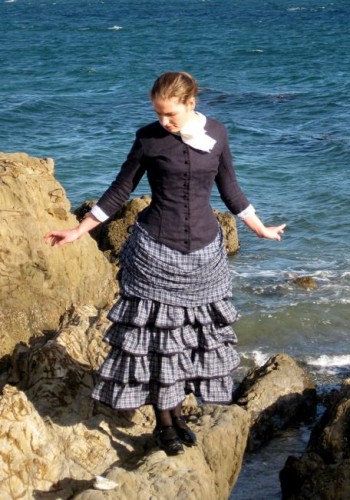
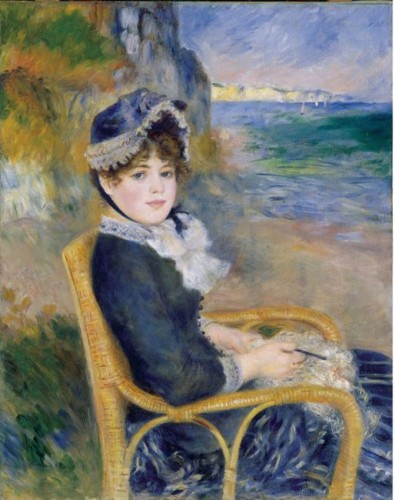

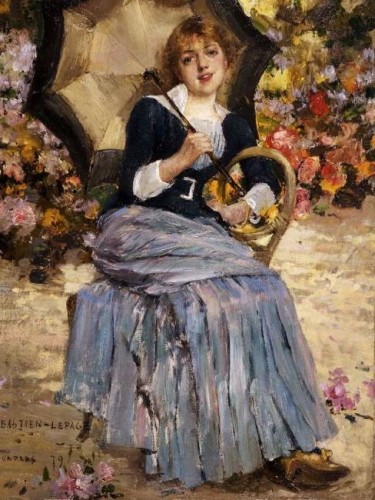
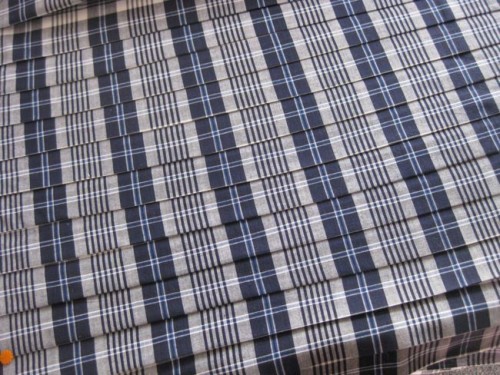
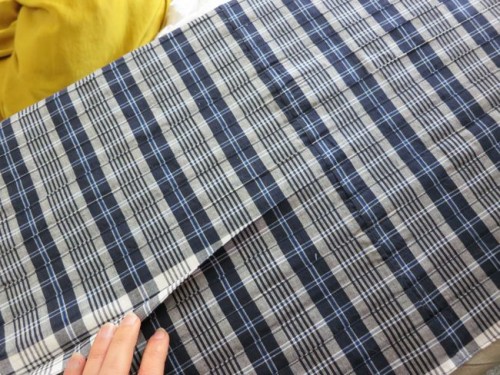

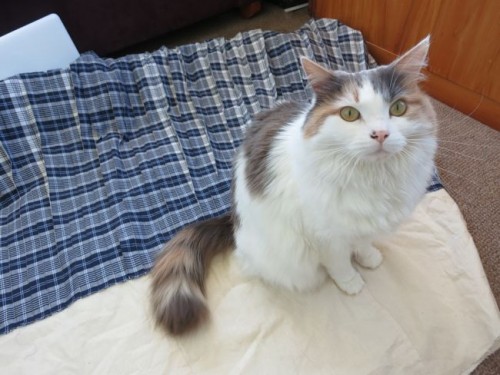
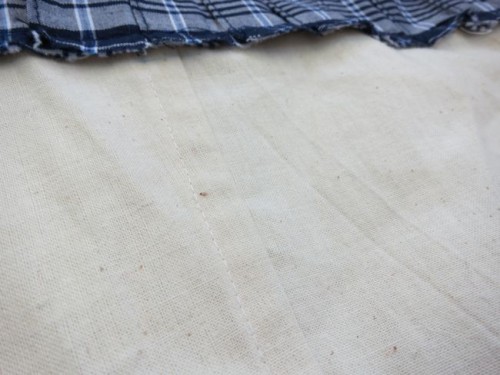
Just in case you didn’t know, you’re my hero! Well done on the pleats – a ton of work, yes, but the result will be STUNNING!
…thankD’awww …thank you!
I agree with Meg – you’re my hero, too! Splendid pleating. Yes, a major pain, but it will be so worth it. Piecing is a doddle with tartans – it can be almost invisible.
You will be so glad you part stiched the pleats down. Peering at the great dress from the Met, it looks as if the pleats on that skirt are stitched down at the top, too.
Lovely outfit – we need a hatter!
Wow, a lot of work in those pleats, I’m in awe of your dedication, at least they will be very stable and the end result is going to look amazing.
Did you try white vinegar on your pleats? I sometimes use a mixture of 1/4 WV to 3/4 water and wet the fabric with it before steaming the pleats, its a tip I got from a couple of old pro sewing books.
Thanks Molly! I came across that tip too, and tried white vinegar. Unfortunately on this fabric it didn’t seem to have much more of an effect than just plain water – it’s really the effect of drying it all out that makes the pleats stay. It did make it smell authentically period though 😉
I bet it smelt great 🙂 I have found the vinegar method hit and miss too, seem to get better results on synthetic fabrics, useful to know you found it didn’t work either.
I have an old domestic pleating machine, like this one: http://madamemodiste.dreamwidth.org/117503.html It does work surprisingly well, but is time consuming positioning all the pleats and needs care or the pleats don’t form properly. But it is fun! Whatever method and however time consuming, I find resulting pleats give a big sense of satisfaction 🙂
Put a full-length A-line underskirt/petticoat on underneath and that will take care of the ‘short skirt’ issue.
It’s back! I’m so glad to see it again; you know how much I love it. It’s too bad the first skirt wasn’t long enough. Do you not have anymore fabric like you made the first skirt out of? Regardless, I like both, and it will be cool to have a top with two skirts to go with it!
I thought you’d like it! I have less than 1/4 a metre of the original fabric left. It would let me improve the original bustle overskirt, but that’s about it. It is good to have skirts for shorter models though.
I can only imagine the work put into the pleating, but it looks abselutely gorgeous! I love the blue/white striped dress you showed, I love tartan and I love pleats, so I’m very much looking forward to seeing the rest of this project :).